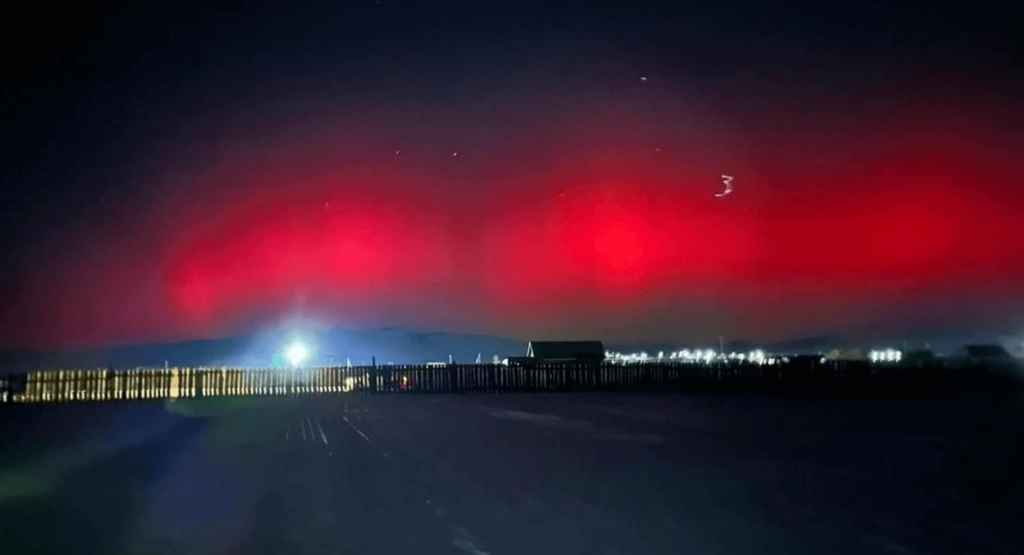Mongolia was surprised by an astounding and rare celestial event, when, on December 2nd and 3rd, their night skies became bright with a vibrant red Aurora Borealis.
The Aurora Borealis phenomenon usually lights up the skies with bright green, purple and light blue hues. However, Mongolia was served an incredibly striking crimson hue, which according to Mongolian scientists, was because of the interaction of solar particles with oxygen at high altitudes — over 241 kilometers above the Earth’s surface, where the atmosphere is much thinner. Aurora Borealis are not uncommon within countries in the Northern Hemisphere, however, Mongolia’s vibrant red Auroras are so rare that it is rarely documented.
Across the Northern Hemisphere, auroras are usually best seen between September and April, and the further north you head, the better chance of witnessing the phenomena. Territories like Scandinavia, Canada, Alaska are some of the more famous tourist locations for Aurora Borealis enthusiasts.
Red Auroras are caused by solar particles colliding with oxygen molecules at higher altitudes. Greater Heights can lower the density of the oxygen molecules present, and the collisions between molecules infrequently, resulting in the creation of red light rather than the common green and purples.
One of the most notable records of red aurora borealis were on September 1st and 2nd , 1859, also known as the Carrington Event, one of the most intense geomagnetic storms in recorded history.
Because of the intensity of the Solar flare, this year’s Aurora Borealis season has been very vibrant and powerful, with the Borealis being seen as far south as Midwestern U.S. states, Scotland and Wales in the U.K and Japan. Aurora Australis, which is the phenomenon that happens in Southern skies, also had some increase in vibrancy, which were seen in New Zealand, Tasmania and Australia.
The occurrence of the rare celestial event has provided scientists with a unique opportunity to study the effects of solar storms at lower latitudes. It also serves as a reminder of the Sun’s power and the potential impact of solar weather on our technology, as rare as they are to us.
Other POP! stories you might like:
The Colors of Philippine Noel: SM City Tarlac’s official entry for ‘Belenismo sa Tarlac 2023’
Research institute in Japan releases trading cards of Japanese science ‘heroes’
Plans in progress to transform Japan’s ‘ghost houses’ into tourist lodgings


